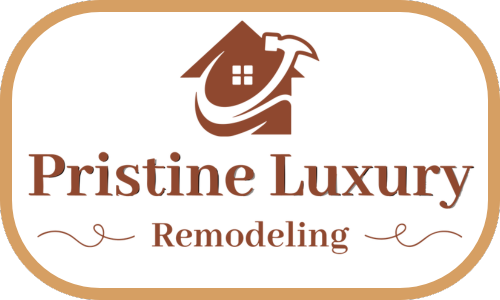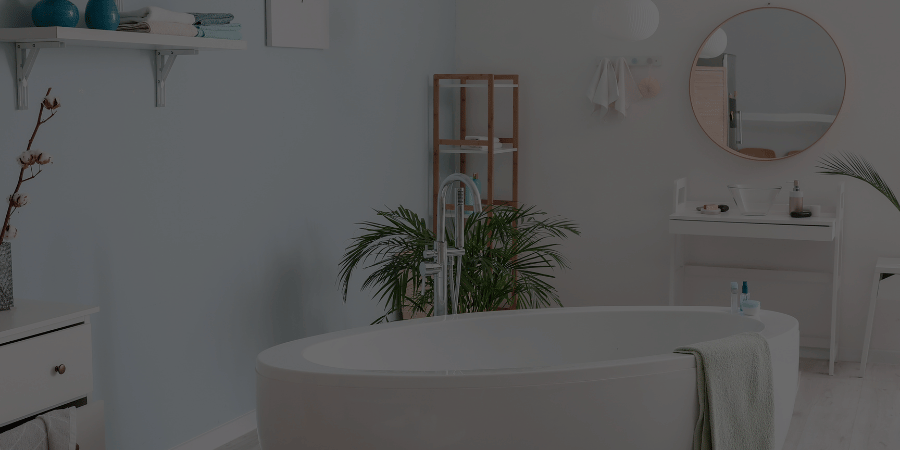The concept of indoor-outdoor living has gained popularity, emphasizing a harmonious connection between the interior and exterior spaces of a home. In this blog post, we’ll explore practical tips and innovative design solutions to achieve a seamless transition, enhancing both your home’s value and your overall enjoyment.
A successful indoor-outdoor transition depends on strategic layout, energy-efficient door solutions, and minimizing visual barriers. Let’s delve into the specifics:
Strategic Layout and Flow
Assess Your Home’s Layout
Work with a professional to evaluate your home’s flow and identify key areas for the transition. A professional can provide expert insights into optimizing the layout, ensuring that spaces are functional and aesthetically pleasing. They can help you identify areas where transitions between rooms can be improved, such as widening doorways, removing barriers, or incorporating design elements that create a seamless flow. This evaluation ensures that any changes made enhance the overall harmony of your home, making it more comfortable and visually cohesive. Collaborating with a professional guarantees that your home’s design supports both your lifestyle and aesthetic preferences, resulting in a well-planned and efficient living space.
Expansive Openings
Install large glass doors or sliding panels to visually connect indoor and outdoor spaces. These features create a seamless transition between your interior and exterior, allowing natural light to flood into your home and providing expansive views of your outdoor areas. Large glass doors and sliding panels can make rooms feel more spacious and open, enhancing the overall aesthetic appeal. They also promote better airflow and can be used to create flexible living spaces that adapt to different needs and occasions. Incorporating these elements into your home design not only enhances the visual connection to the outdoors but also contributes to a brighter, more inviting living environment.
Furniture Placement
Position furniture near the transition point and choose a color palette that enhances the flow. Strategically placing furniture near the transition areas, such as around large glass doors or sliding panels, can create a welcoming and cohesive space that invites movement between indoor and outdoor areas. Selecting a color palette that complements both interior and exterior designs further enhances this flow, creating a harmonious and visually appealing connection. Using similar or complementary colors and materials helps to blend the spaces together, making the transition smoother and more natural. By thoughtfully positioning furniture and choosing the right color palette, you can create a unified, functional, and aesthetically pleasing living environment.
Lighting Solutions
Natural Light Optimization
Discuss the importance of maximizing natural light in both indoor and outdoor spaces. Natural light plays a crucial role in creating a pleasant and healthy living environment, enhancing the aesthetic appeal, and reducing energy consumption. In indoor spaces, ample natural light can make rooms feel more open, airy, and inviting, positively impacting mood and well-being. It can also reduce the need for artificial lighting, lowering energy bills and promoting sustainability. For outdoor spaces, maximizing natural light enhances visibility and usability, making these areas more enjoyable for activities and relaxation. Incorporating design elements such as large windows, skylights, and strategically placed mirrors can help to harness and distribute natural light effectively.
Strategic Lighting Fixtures
Explore options like pendant lights, sconces, and string lights to create ambiance during evenings. Pendant lights can provide focused illumination and serve as stylish focal points in both indoor and outdoor settings bathroom remodeling, adding a touch of elegance and sophistication. Wall-mounted sconces offer versatile lighting solutions that enhance the architectural features of your space while providing soft, ambient light that creates a cozy atmosphere. String lights, with their warm and inviting glow, are perfect for adding a whimsical and festive touch to outdoor patios, gardens, or even indoor spaces, making them ideal for entertaining or relaxing evenings.
Pathway Lighting
Illuminate pathways and walkways for both safety and aesthetics. Proper lighting along these areas ensures that they are visible and safe to navigate, reducing the risk of accidents or tripping hazards, especially during the evening or in low-light conditions. Pathway lights, such as LED fixtures or solar-powered lanterns, provide a gentle yet effective illumination that highlights the path while creating an inviting and visually appealing environment. Additionally, well-lit walkways enhance the overall aesthetic of your outdoor spaces, adding to the charm and character of your property. By integrating thoughtful lighting solutions, you not only improve the safety and functionality of your walkways but also enhance the beauty and ambiance of your home’s exterior.
Material Selection
Flooring Materials
Compare various flooring options, such as hardwood, stone, or composite decking, to achieve consistency between indoor and outdoor spaces. Hardwood flooring provides a classic and elegant look that can extend from interior rooms to covered outdoor areas, creating a seamless transition with a warm, natural aesthetic. Stone flooring, known for its durability and timeless appeal, offers a cohesive and sophisticated appearance that works well both inside and on patios or pathways, blending luxury with practicality. Composite decking, with its modern, low-maintenance qualities, is ideal for outdoor spaces and can be selected in finishes that complement indoor flooring materials, achieving a unified look across different environments.
Seamless Transitions
Highlight the use of the same material or complementary ones for flooring inside and outside to create a cohesive and unified look throughout your home. Using the same flooring material, such as hardwood or stone, for both indoor and outdoor areas can seamlessly extend the aesthetic flow between spaces, enhancing the overall continuity and visual appeal. Alternatively, choosing complementary materials that match in color, texture, or style can achieve a harmonious transition while still allowing for the practical needs of each area. For example, if you use a specific type of stone indoors, selecting a similar stone or a complementary composite material for outdoor flooring can tie the spaces together, creating a visually pleasing and consistent design.
Weather-Resistant Finishes
Discuss finishes that withstand outdoor elements without compromising aesthetics to ensure both durability and visual appeal in your outdoor spaces. Opt for finishes specifically designed to endure exposure to the elements, such as high-quality outdoor-grade paints, sealers, and coatings. For wood surfaces, choose finishes like marine-grade varnishes or UV-resistant stains that protect against moisture, sunlight, and temperature fluctuations while maintaining the wood’s natural beauty. Stone and tile surfaces benefit from sealers that resist water penetration and staining, preserving their appearance and longevity.
Furnishing and Decor
Outdoor Furniture Trends
Explore current trends in outdoor furniture, which include modular seating, daybeds, and outdoor rugs, to create stylish and functional outdoor living spaces. Modular seating sets are popular for their versatility, allowing you to rearrange pieces to suit different gatherings or activities. They often feature weather-resistant materials like wicker or aluminum, paired with cushions designed to withstand outdoor conditions. Daybeds have become a luxurious addition, offering a comfortable spot for lounging or napping outdoors. They come in various styles and materials, from rattan to teak, and often include canopy options for shade and privacy.
Indoor-Outdoor Decor
Share ideas for incorporating indoor decor elements, such as cushions, artwork, and mirrors, into outdoor spaces to create a cohesive and inviting atmosphere. Adding cushions with vibrant patterns or textures to outdoor furniture can bring a touch of comfort and style, making the space more inviting and personalized. Outdoor-friendly artwork, such as weather-resistant prints or sculptures, can add visual interest and reflect your personal taste, creating a gallery-like feel in your garden or patio. Mirrors, designed for outdoor use, can be strategically placed to reflect light and create the illusion of more space, enhancing the ambiance and depth of your outdoor areas.
Plants and Greenery
Discuss the role of plants in enhancing the transition between indoor and outdoor spaces and creating a cohesive atmosphere. Plants serve as a natural bridge between indoor and outdoor environments, softening the boundaries and blending the two areas seamlessly. By incorporating indoor-friendly plants in your living spaces and choosing similar or complementary species for outdoor areas, you can create a harmonious flow that connects both environments. Indoor plants, like ferns or philodendrons, can be placed near windows or in areas with natural light, while outdoor plants, such as boxwood or lavender, can extend the same green aesthetic to your patio or garden.
Answering Common Questions
Q1 How can I maintain privacy while achieving a seamless transition?
A1 Consider using frosted glass or window treatments for privacy without compromising the connection.
Q2 What about weather conditions?
A2 Invest in weather-resistant furniture and outdoor accessories to withstand different seasons.
Q3 Can I create a seamless transition in a small space?
A3 Yes! Choose multifunctional furniture and utilize compact design elements.
The Impact of Landscaping
Incorporating greenery and organic elements can effectively bridge the gap between indoor and outdoor spaces. By adding plants, trees, and natural materials, you bring a touch of the outdoors inside. Designing purposeful outdoor rooms is also essential, where you can create comfortable seating areas, install appropriate lighting, and include functional features to enhance the usability and ambiance of these spaces.
Seeking Expert Advice
Consulting a landscape architect can provide you with professional guidance on optimizing your outdoor space, ensuring it is both functional and aesthetically pleasing. Additionally, collaborating with architectural designers who specialize in indoor-outdoor transitions can help you create seamless connections between your interior and exterior areas, enhancing the overall design and flow of your space.
Conclusion
Creating a seamless indoor-outdoor living experience enhances your quality of life, fosters a deeper connection with nature, and adds significant value to your home. This approach integrates your indoor and outdoor spaces in a way that promotes fluid movement and visual harmony, making your living environment more expansive and enjoyable. Prioritize functionality by ensuring that both areas are designed to meet your practical needs, such as comfort, convenience, and durability.
Aesthetics are equally important; select materials, colors, and design elements that complement each other to create a cohesive and attractive look. Sustainability should also be a key consideration; choose eco-friendly materials and practices that minimize environmental impact while maximizing efficiency. By addressing these aspects thoughtfully, you can achieve a balanced and sophisticated living experience that enhances your home’s appeal and functionality.
Visit us at Pristine Luxury Remodeling
For more information and personalized guidance visit us at Pristine Luxury Remodeling, We specialize in providing exceptional remodeling services that elevate your space into a masterpiece of luxury.







